Museum of Oxford reopening: Century-old marmalade tin among exhibits
- Published
A century-old tin of marmalade, a medal belonging to the real Alice in Wonderland and ice skates made from animal bone all feature in the newly reopened and refurbished Museum of Oxford.
The museum celebrates the city's history and its people.
Its collection of 750 fascinating objects have been narrowed down to six favourites by the staff who work there.

Scott of the Antarctic's tin of marmalade
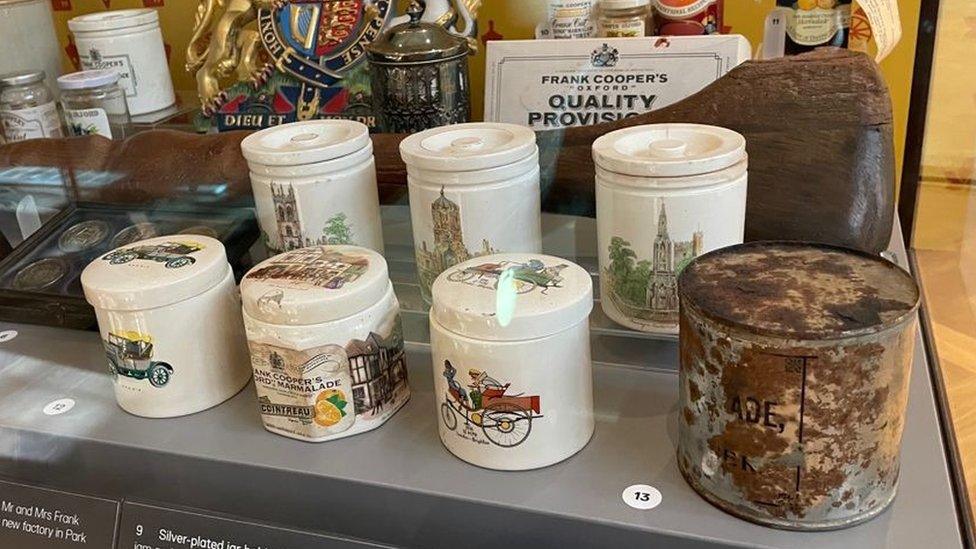
The tin features as part of a Frank Cooper's marmalade exhibit
"This tin endured its journey to the ends of the earth and back, and gives us a glimpse of a story no-one survived to tell," schools engagement officer Ollie Parr says.
Captain Robert Falcon Scott, better known as Scott of the Antarctic, set off on his ill-fated expedition to be the first explorer to reach the South Pole in 1910.
Private expeditions required large amounts of money and support, and Scott's rations included marmalade and fruit preserves, donated free of charge, from the Oxford company Frank Cooper.
Scott reached the South Pole in January 1912 but his team had been beaten by a Norwegian party led by Roald Amundsen.
Scott and the rest of his men perished on the journey back. Eight months later a search party found their bodies in a tent, along with Scott's diary and this tin, which made its way back to Oxford.
The tin features as part of an exhibit that celebrates the legacy Frank Cooper's has given to the city.
It includes several jar designs from over the years, and a large wooden paddle that was once used to stir the marmalade at its factory.

The tin of marmalade joined Scott on his ill-fated journey to the South Pole

Alice Liddell's Red Cross medal
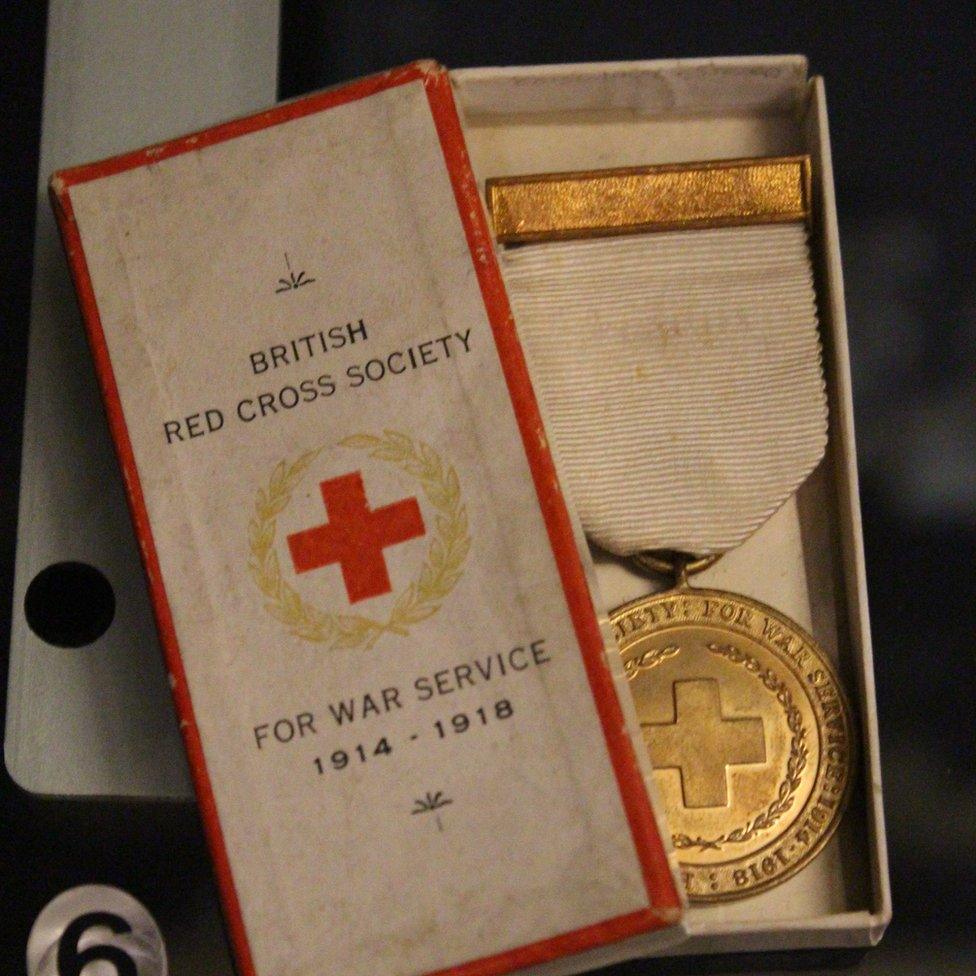
Alice Liddell did voluntary work during World War One
This Red Cross medal "shows the strong woman behind the Alice in Wonderland story", says retail operations assistant Cat Lewin.
Alice Liddell became the inspiration for the character, conceived by Oxford academic Lewis Carroll.
But Liddell lived a long life, dying in 1934 at the age of 82. She carried out voluntary work during World War One, and two of her sons died in the conflict.
The medal is part of an exhibit that includes several other items relating to Liddell's life, including watches, scissors, a card case, pencil and books.
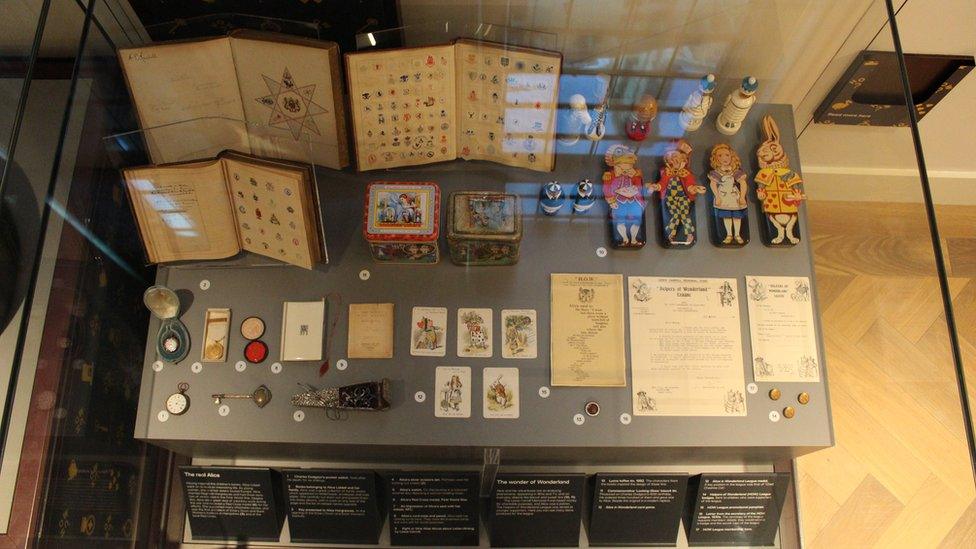
The medal resides among an array of other items relating to the life of Liddell

Model bus and carved carabao
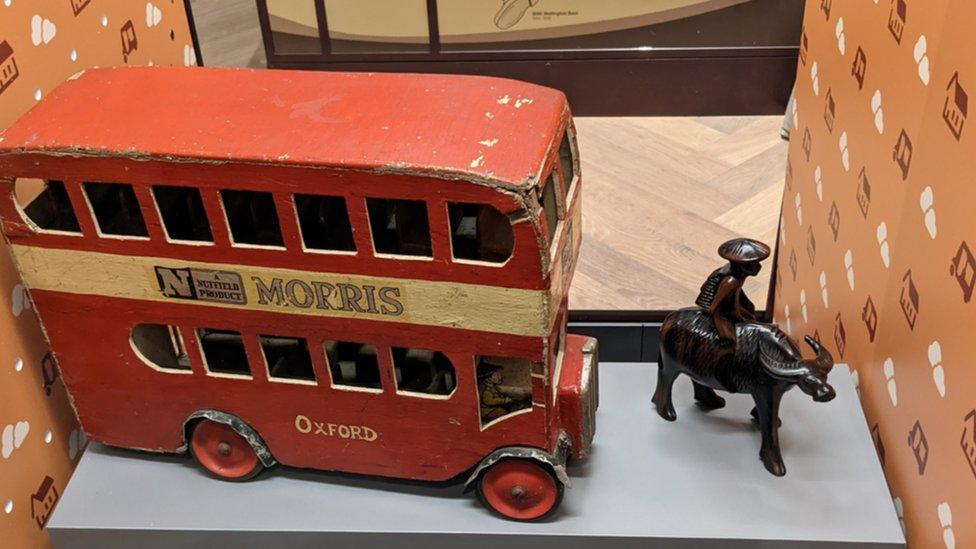
The model bus and carabao were both carved out of wood by doting fathers
A model bus and a carved carabao, which are on display together "represent heart-warming stories about two Oxford residents' connections to their dads", says community engagement and exhibitions officer Marta Lomza.
The bus was made for Chris Rogers by his father Bob in Oxford in the early 1950s.
"He constructed it out of spare pieces of wood, purely out of his imagination, using his amateur wood-working skills," Chris Rogers is quoted as saying.
The wooden carabao - a species of water buffalo - was made in Manila in the 1990s and brought to Oxford by Ariel Lanada, whose father made it for him.
Mr Lanada moved to the city to work for the NHS.

Cold War measurement templates
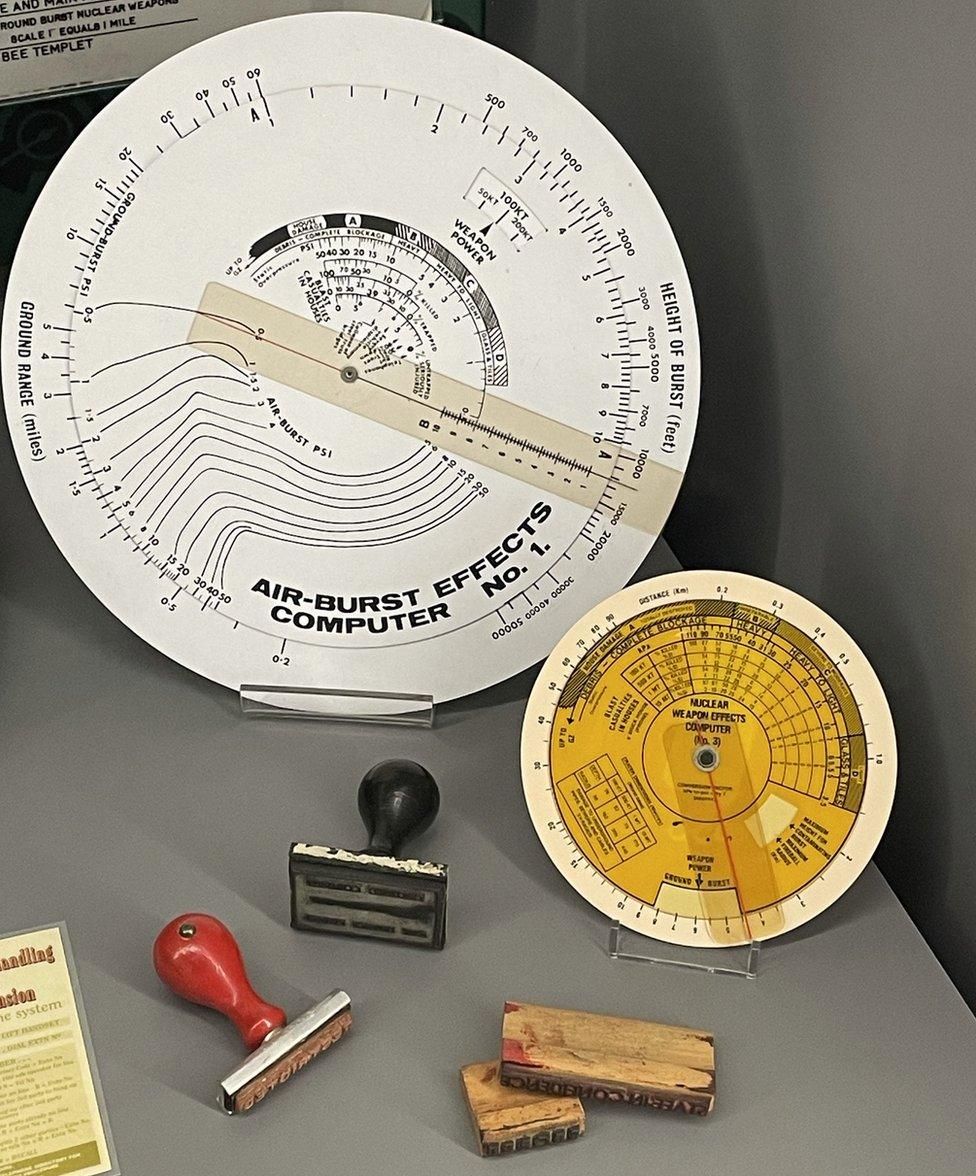
Discs were to be used to monitor the effects of nuclear fallout in cases of attack
The nuclear fallout zone calculator "represents a potential future, from a challenging point of history, that humanity thankfully avoided", Mr Parr said.
As Cold War tensions increased in the 1950s, shelters and underground communications bunkers were constructed in case of nuclear attack.
The museum has an array of templates and discs that were stored in these emergency centres.
They could be used to monitor the effects of nuclear fallout by aligning the dials with different measurements.

Anglo-Saxon ice skate
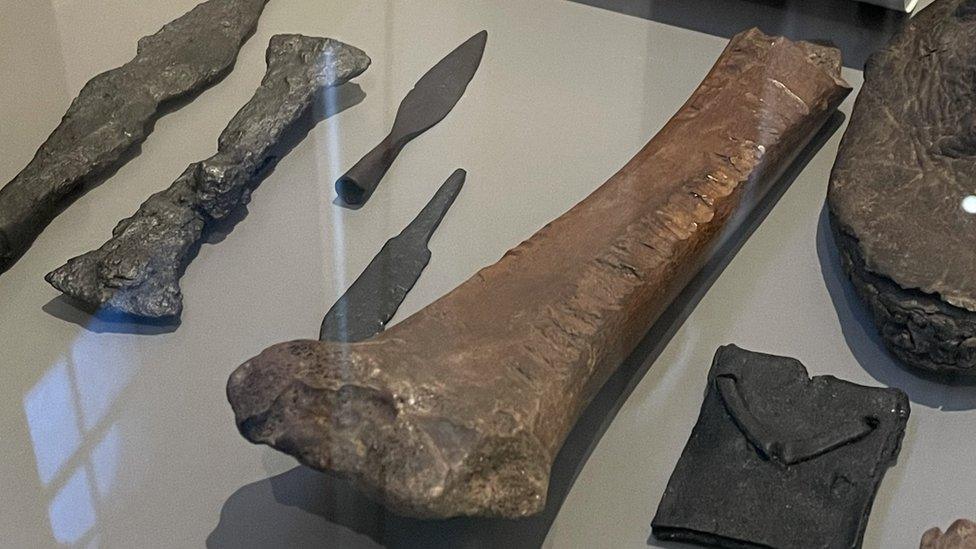
The 1,000-year-old ice skate was in fact made from animal bone
The Anglo-Saxons moved into Oxfordshire in the 7th Century and used a variety of materials to make their clothing and jewellery.
They also used ice skates to get around during harsh winters, using animal bones as blades.
Volunteer engagement officer Katy Hammond says: "I'd assumed ice skating was a modern invention. It reminds me that there is no such thing as a new idea."

Narrowboat mirror
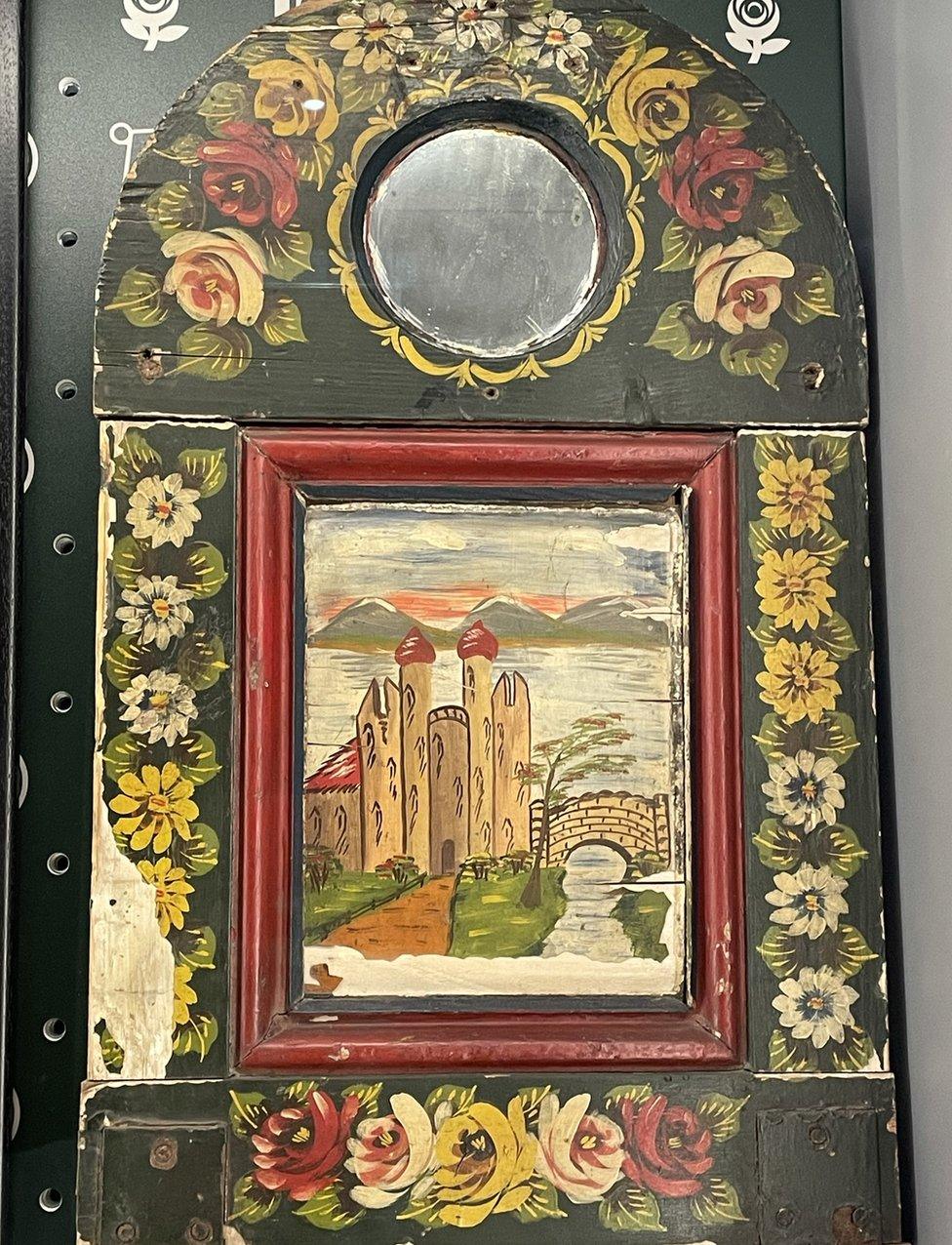
This narrowboat table is also a decorative mirror and a painting
"Not only is it beautifully decorated in the traditional roses and castles style, it's a great three-in-one space-saving piece of furniture: a mirror, painting, and table," says heritage learning assistant Helen Pooley.
The Oxford Canal was completed in 1790, bringing with it cargo-carrying narrowboats to the city.
Sometimes an entire family lived on board these boats in one small cabin.
On show at the museum is this narrowboat tabletop which folded up when not in use to become a decorative panel and mirror.

Follow BBC South on Facebook, external, Twitter, external, or Instagram, external. Send your story ideas to south.newsonline@bbc.co.uk, external.
All pictures subject to copyright
- Published11 October 2021
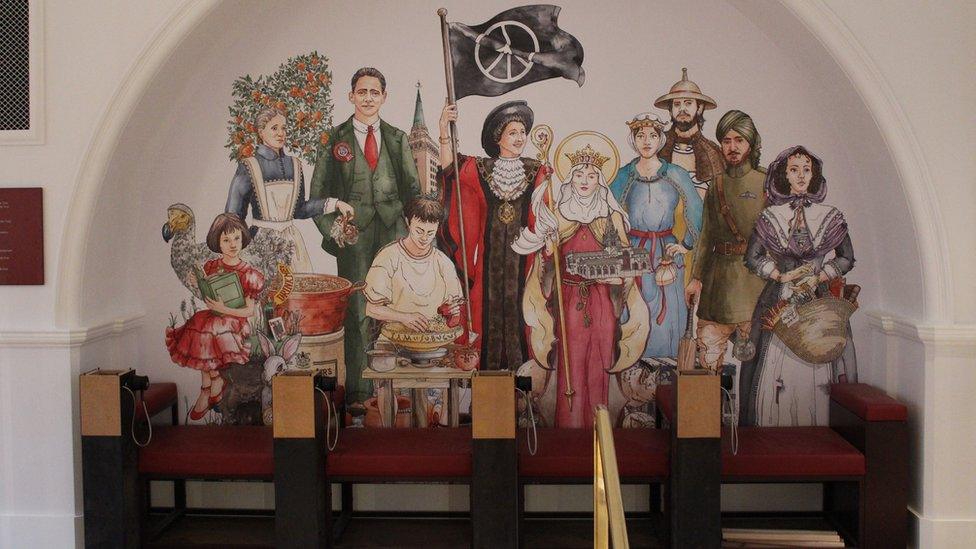
- Published11 February 2020
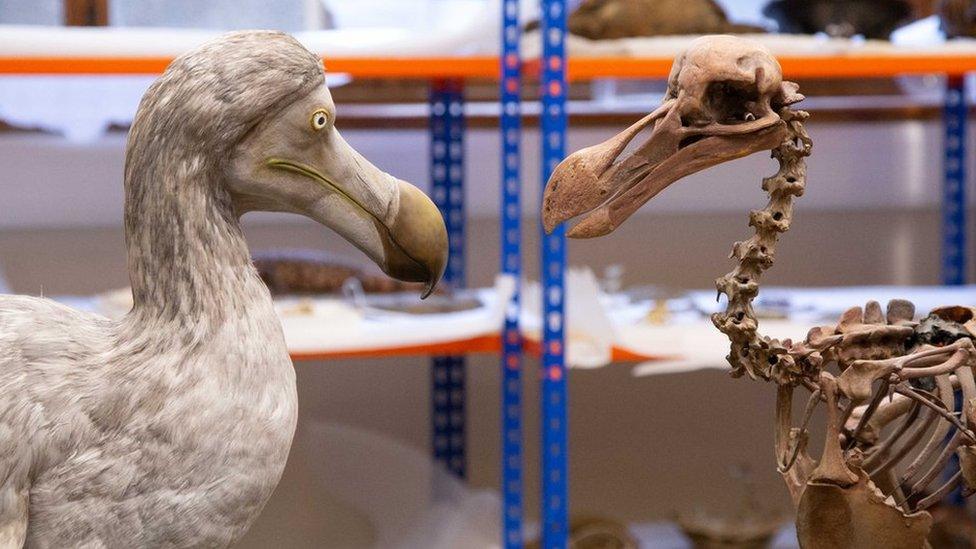
- Published23 August 2017

- Published29 March 2013
